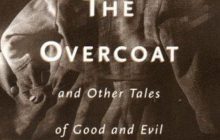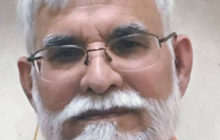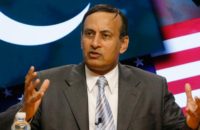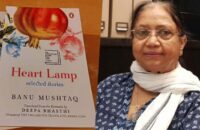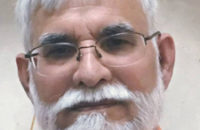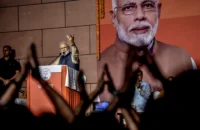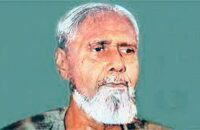by Ayesha Siddiqa
The recent clash between Hindus and Muslims—or Indian Hindus and Pakistani Muslims—in Leicester, a town located about 140 kilometres north of London, is but one of the many faces of what future British politics will have to cater to. In fact, it has spread to other towns as well.
Very simply, the racial tension that started over two cricket matches at the end of August between India and Pakistan played in the Gulf as part of the Asia Cup got out of control. Despite that, social media accounts of both communities tend to tell their own story. But the fact is that both sides were ready for confrontation. A Hindu mob took out a march, shouting ‘Jai Shri Ram’ in a Muslim-dominated area and people even spoke of glass bottles being broken and stones being pelted, which then saw responses from Muslims, mainly Pakistanis, attacking cars and shops with visible Hindu religious signs. Though the matter has now been controlled after the police made 47 arrests, the incident was beyond shocking and indicative of the future of Hindu-Muslim or Hindu-versus-Muslim extremism in the UK.
The bitter pill of the ’90s
Muslim and Hindu community leaders made reconciliatory statements and the local police were of the view that social media was a major factor, but the communal conflict has a strong internal base and is bound to repeat itself either in Leicester or some other town. Indeed, the mobs on both sides were not just local but many sources also claimed that they came from other places such as London and Birmingham. This was also not the first instance of Hindu-Muslim communal tension in the UK or even Leicester.
The first time it happened was in 1992 after the destruction of the Babri Masjid in Ayodhya. The cycle of violence spread over a period of seven days in which over 12 temples in London and the Midlands were attacked resulting in counterattacks against Muslim mosques, including an attack using a petrol bomb. Though Apurba Kundu argues in his paper in the journal Immigrants and Minorities that the week of post-Ayodhya violence did not doom the UK’s “Asian community to communal strife…(and that)..many UK Asians see the attack as exceptions to the rule of good relations,” the fact is that the ’90s were the beginning of many things that led to the current spate of violence in Leicester.
The British State politics that clearly encouraged religious communalism, the undeterred growth of extremism, the rapidly growing socioeconomic disparity between the various communities, and the changing nature of the states of origin that these communities are lined with made violence in Leicester inevitable.
Britain, especially successive Tory governments, inadvertently encouraged extremism. Things started to happen even before 1992 as a result of the Tory government policy to encourage communal education and schools. The Margaret Thatcher government, keen to draw people away from the Labour party, invested in communal education that encouraged religious education. The geopolitical circumstances of the 1980s and 1990s led various extremisms to congregate in Britain.
The Muslim anxiety
As a partner in the war in Afghanistan against the former Soviet Union, the UK allowed all forms of Muslim clergy to freely roam around and proselytise. It was during this period that many including Masood Azhar visited the UK. This was the period of psychological transformation of the Muslim Asian population—comprised mainly of Pakistanis from Mirpur, Bengalis from Sylhet and Muslims from Gujarat. The week of post-Ayodhya violence was, hence, inevitable. The Muslim groups also protested against Salman Rushdie’s Satanic Verses in which the British Muslim community had an important role. It was a delegation from the UK that went to convince the Iranian Ayatollah to issue a fatwa against Rushdie. The Asian Muslim leaders in Britain even talked about setting up a Muslim parliament with the intent of bolstering the morale of the youth that was down due to how they saw the world viewing the Muslim community.
Sadly, in the process, the British Muslim leaders inculcated greater conservatism but nothing towards the socioeconomic betterment of the community. So, the communal anxiety, especially among the youth, is also driven by a sense of insecurity vis-à-vis the Hindu community. Some of the Muslims in Leicester I spoke with lamented the Pakistani migrants not encouraging their children towards education and government jobs like the Indians, resulting in greater socioeconomic disparity. There are more Indians and Hindus in the civil service. The Muslim community is most affected by the communal imbalance in services like the Home Office and police. In Leicester, they already speak about the police not managing a balance. The Muslim population blame local Muslim leaders for not doing much for the community other than building mosques and religious centres.
But this fear actually plays out in real life at a communal level. The fear is bound to multiply as they watch the Hindu community gain more influence due to the growing affinity between India and the UK. Pro-BJP groups’ coordinated use of temples to bring votes to the benefit of the Tory party in the 2019 elections or the British dependency on Delhi for signing the Free Trade Agreement is certainly good for bilateral relations but the impact on communal relations in the UK cannot be ignored. The Indian State only condemning the violence against the Hindu community and not advising restraint only signifies the way matters will get played at the top. Greater arrogance of one community against another is bound to generate insecurity and hence more violence.
A fire that will spread
This is a case of anxious Muslim youth pitched against a younger lot of migrants coming from places in India such as Daman and Diu with a high anti-Muslim sentiment.
Some of the people I spoke with said that while the Hindu and Muslim communities have generally lived in peace, the new crop of migrants is a different story. The Hindu-Muslim confrontation that is visible in India is likely to get a chance to play its hand in the UK with worse consequences. Global Islam versus a newly globalised Hinduism will not only strengthen Britain’s Right-wing politics but also impose a burden that the former colonial state may not be able to carry.
Now that Queen Elizabeth II is gone, many are wondering if King Charles III will be able to step into her shoes. While some would judge the new monarch, the fact remains that his performance is not just dependent on him but also on the size and shape of the shoe. Will the British State and politics be of the character that merits a historical institution? Looking at the current nature of politics at the top and in society one immediately becomes conscious of the challenges. The politics of the Tories and the need to boost the British economy may create more issues than the political class’s capacity to find solutions can handle.
However, the South Asian states should remain under no illusion that this will be limited to Britain—it will have consequences for them too.
Ayesha Siddiqa is Senior Fellow at the Department of War Studies at King’s College, London. She is the author of Military Inc. She tweets @iamthedrifter. Views are personal.






